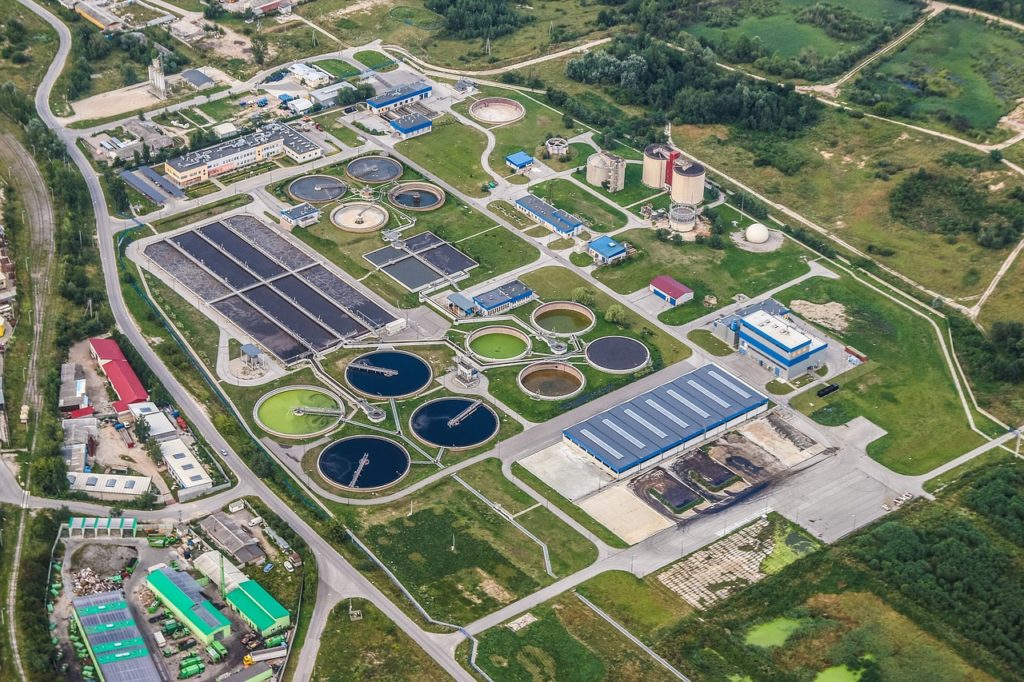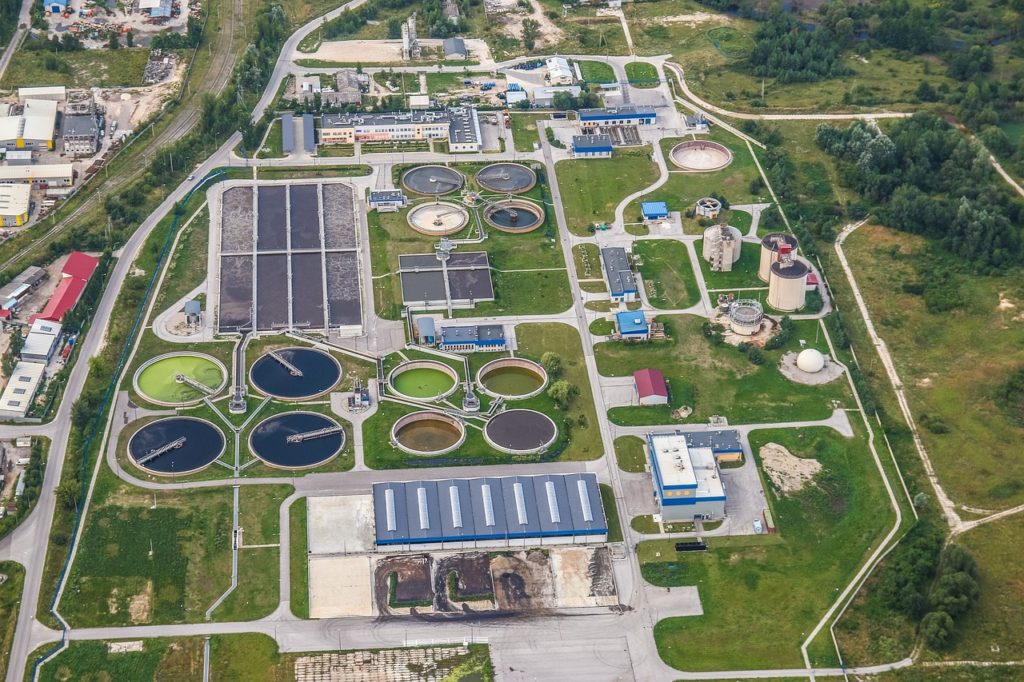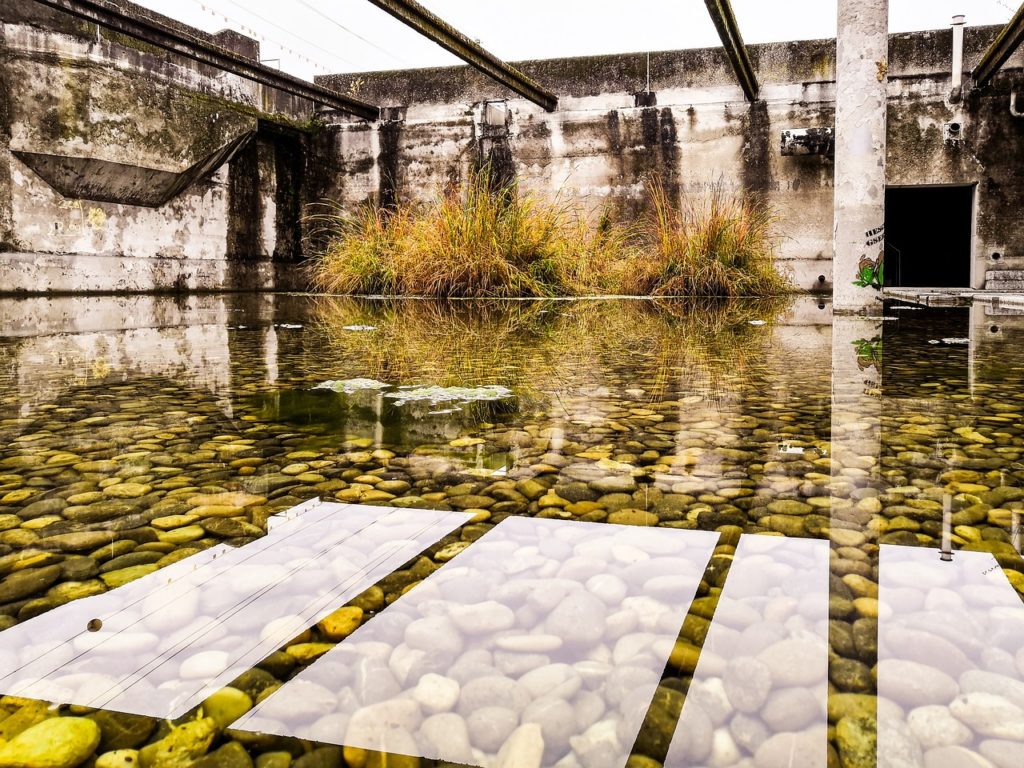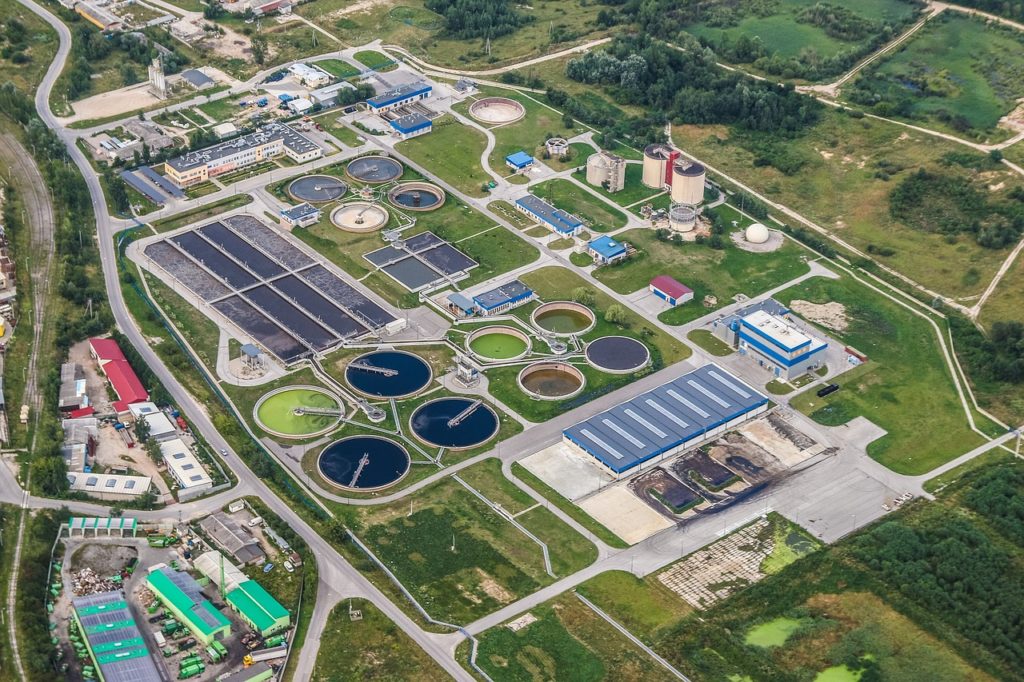So, you’ve found yourself curious about wastewater treatment systems. Well, get ready to dive into the world of wastewater treatment because we’ve got a comprehensive guide just for you! In this article, we will explore the different types of wastewater treatment systems, giving you a better understanding of how these systems work to clean and purify wastewater. From biological treatment to physical and chemical processes, you’ll soon have a newfound appreciation for these vital systems that protect our environment and keep our water sources clean. So, let’s not waste any more time and jump right in!
A Comprehensive Guide to Wastewater Treatment Systems
Wastewater treatment is an essential process that ensures the safety and cleanliness of our water supply. It involves the removal of contaminants and pollutants from wastewater before it is released back into the environment. There are several primary, secondary, and tertiary treatment methods, as well as other specialized processes, that work together to treat wastewater effectively.

Primary Treatment
Screening
Screening is the first step in the wastewater treatment process. It involves the removal of large objects, such as trash, rocks, and debris, from the wastewater. This is typically done using a screen or grate system that traps the solid materials while allowing the liquid to pass through. Screening helps protect downstream equipment and prevents clogging and damage to pumps and pipelines.
Grit Removal
After screening, the wastewater undergoes grit removal to eliminate inorganic particles, such as sand, gravel, and small rocks, that may cause damage or hinder the treatment process. Grit removal is achieved through sedimentation or grit chambers, where the heavier particles settle to the bottom and are ultimately removed from the system. This step ensures the smooth operation of subsequent treatment processes.
Sedimentation
The primary treatment process continues with sedimentation, also known as primary clarification. In sedimentation tanks or clarifiers, the wastewater is allowed to settle, allowing suspended solids and heavier organic particles to settle at the bottom as sludge. The clarified water at the top is then discharged for further treatment. Sedimentation helps remove a significant portion of the suspended solids and some organic matter, reducing the load on secondary treatment processes.
Secondary Treatment
Biological Treatment
Biological treatment is the core component of secondary wastewater treatment. It harnesses the power of microorganisms, such as bacteria and fungi, to break down organic matter in the wastewater. This process is crucial in reducing the biochemical oxygen demand (BOD), which indicates the amount of oxygen needed to decompose organic matter in water. Biological treatment can occur through various methods, such as the activated sludge process, trickling filters, and rotating biological contactors.
Activated Sludge Process
The activated sludge process involves aerating the wastewater and introducing microorganisms, or activated sludge, to consume the organic pollutants. The wastewater is mixed with a mixture of returned activated sludge and air, creating an environment conducive for the growth and metabolism of microorganisms. These microorganisms consume the organic matter, reducing its concentration in the water. The mixture is then settled in a clarifier, and the excess activated sludge is recycled back into the treatment process.
Trickling Filters
Trickling filters use a bed of rocks, plastic media, or other porous materials to support a layer of microorganisms. Wastewater is sprayed over the filter bed, allowing it to trickle down through the media, providing oxygen and nutrients to the microorganisms. As the wastewater passes through, the microorganisms consume the organic matter, effectively treating the wastewater. The treated water then collects in an underdrain system and is transferred for further treatment.
Rotating Biological Contactors (RBC)
In the rotating biological contactor process, wastewater moves over a series of rotating discs or drums that are partially submerged. The rotating motion provides contact between the wastewater and the biofilm that develops on the surfaces of the discs or drums. The biofilm consists of microorganisms that degrade the organic matter in the wastewater. The treated wastewater is then collected and further treated as necessary. RBC systems are known for their compact design and efficient treatment capabilities.

Tertiary Treatment
Filtration
Tertiary treatment focuses on further removing substances that may still be present in the wastewater after primary and secondary treatment. Filtration involves passing the clarified water through various filters, such as sand filters, multi-media filters, or membrane filters, to remove any remaining suspended solids, fine particles, and residual organic matter. This process improves the water’s clarity and quality, making it safe for reuse or discharge into water bodies.
Disinfection
Disinfection is a crucial step in wastewater treatment to ensure the elimination of harmful microorganisms. Various methods can be used for disinfection, such as chlorination, ultraviolet (UV) disinfection, and ozonation. Chlorination involves adding chlorine or chlorine-based compounds to the water to kill bacteria, viruses, and other pathogens. UV disinfection utilizes ultraviolet light to destroy microorganisms, while ozonation uses ozone to oxidize and neutralize contaminants. Each disinfection method has its advantages and is carefully chosen based on the wastewater treatment requirements and regulatory standards.
Nutrient Removal
Nutrient removal is important in wastewater treatment to prevent nutrient pollution and the harmful effects it can have on ecosystems. Excessive nutrients, such as nitrogen and phosphorus, can contribute to the growth of harmful algal blooms and disrupt aquatic ecosystems. Various processes, such as biological nutrient removal (BNR) and chemical precipitation, can be employed to remove these nutrients from wastewater. BNR utilizes specific microorganisms that can convert nitrogen and phosphorus into harmless gases or solids. Chemical precipitation involves adding chemicals that facilitate the removal of nutrients through precipitation or settling.
Anaerobic Digestion
Process Overview
Anaerobic digestion is a biological process that breaks down organic matter in the absence of oxygen. It involves the use of anaerobic microorganisms, such as bacteria and archaea, to decompose organic waste, producing biogas and nutrient-rich biosolids. The process occurs in a closed system called a digester, where the organic waste is heated and mixed to create optimal conditions for microbial activity. Anaerobic digestion is commonly used for the treatment of sludge generated during wastewater treatment or organic wastes from industries and agricultural operations.
Benefits
Anaerobic digestion offers several benefits for wastewater treatment and waste management. It helps reduce the volume of organic waste, minimizing its impact on landfills and the environment. The biogas produced during the process can be utilized as a renewable energy source for heat and electricity generation, reducing the reliance on fossil fuels. The nutrient-rich biosolids generated can be further treated and used as a fertilizer or soil amendment. Overall, anaerobic digestion contributes to sustainable waste management practices and resource recovery.
Applications
Anaerobic digestion finds applications in various sectors, including municipal wastewater treatment plants, industrial facilities, and agricultural operations. In wastewater treatment plants, anaerobic digestion is commonly used for the treatment of sludge, reducing its volume and rendering it safe for disposal or beneficial use. In industries, such as food processing and pulp and paper manufacturing, anaerobic digestion can be employed to treat organic waste streams, recovering energy and valuable byproducts. The agricultural sector can utilize anaerobic digestion to manage animal manure and crop residues, reducing odor emissions, generating renewable energy, and producing nutrient-rich fertilizers.

Constructed Wetlands
Mechanism
Constructed wetlands are engineered systems that mimic the natural processes of wetlands to treat wastewater. They consist of shallow basins or channels filled with a combination of gravel, sand, and wetland plants. As wastewater flows through the wetland, physical, chemical, and biological processes take place, removing pollutants and purifying the water. The gravel and sand act as filters, trapping suspended solids and facilitating microbial activity. The wetland plants enhance the treatment process by absorbing nutrients, promoting biological activity, and providing oxygen.
Types of Wetlands
There are various types of constructed wetlands, each suited for different treatment requirements and site conditions. Subsurface flow wetlands involve the passage of wastewater through a horizontal or vertical flow of porous media, with the plants rooted above the media. Free water surface wetlands, on the other hand, allow the wastewater to flow above the surface of the media, providing additional contact time and enhancing oxygen transfer. Hybrid wetland systems combine elements of both subsurface flow and free water surface wetlands, providing a balance of treatment processes.
Advantages
Constructed wetlands offer several advantages as a wastewater treatment system. They are cost-effective compared to conventional treatment methods, as they rely on natural processes and do not require extensive infrastructure. Wetlands provide habitat and attract wildlife, contributing to biodiversity and ecological balance. They can be aesthetically pleasing and blend with the surrounding landscape, making them suitable for urban and recreational areas. Constructed wetlands are also resilient to climate change, as they can adapt to fluctuating water levels and temperature variations.
Membrane Bioreactors (MBR)
Working Principle
Membrane bioreactors (MBRs) combine biological treatment with membrane filtration to achieve superior wastewater treatment. They utilize a bioreactor to facilitate biological processes, where microorganisms break down organic matter. The effluent from the bioreactor is then treated through membrane filtration, which separates solids, bacteria, and other contaminants from the water. The membranes act as physical barriers, allowing only clean water to pass through. MBRs offer efficient solids removal, high-quality effluent, and a smaller footprint compared to conventional wastewater treatment systems.
Advantages
MBRs provide several advantages over traditional wastewater treatment systems. The membrane filtration in MBRs helps achieve excellent effluent quality, surpassing regulatory requirements. The removal of solids and bacteria through the membranes eliminates the need for secondary clarification tanks or sedimentation processes, reducing the footprint and simplifying the treatment process. MBRs are also highly flexible and can be easily retrofitted into existing treatment plants or used in decentralized treatment systems. Additionally, the treated water produced by MBRs is suitable for non-potable reuse or environmental discharge.
Disadvantages
Despite their advantages, MBRs have a few disadvantages that need to be considered. The membrane filtration process requires more frequent maintenance and may be susceptible to fouling and clogging, requiring regular cleaning and replacement of membranes. The initial capital cost of installing an MBR system is higher compared to conventional treatment methods. The energy consumption of MBRs can be higher due to the need for aeration and membrane cleaning processes. However, advancements in membrane technology continue to address these challenges and improve the efficiency and sustainability of MBR systems.
Sequential Batch Reactors (SBR)
Process Flow
Sequential batch reactors (SBRs) are a batch-type wastewater treatment technology that offers flexibility and efficiency. SBRs operate through a series of sequential phases, including fill, react, settle, decant, and idle. During the fill phase, wastewater is introduced into the reactor tank. In the react phase, the wastewater is treated through biological processes, where microorganisms consume organic matter. After treatment, the mixture is settled, allowing solids to settle at the bottom. The clarified water is then decanted and removed for further treatment. The idle phase allows for any remaining sludge to settle before starting a new batch.
Advantages
SBRs offer several advantages in wastewater treatment. The batch operation allows for greater control and flexibility in managing fluctuating influent conditions and process parameters. SBRs can achieve excellent nutrient removal, making them suitable for treating wastewater with high nitrogen and phosphorus concentrations. The compact design of SBRs allows for efficient use of space and easy integration into existing treatment plants. SBRs can also be equipped with automation and control systems, enhancing operational efficiency and reducing manual labor requirements.
Applications
SBRs find applications in various wastewater treatment scenarios. They are commonly used in small to medium-sized treatment plants, decentralized treatment systems, and industrial applications. SBRs can be used for the treatment of domestic wastewater, including residential, commercial, and institutional sewage. They are also suitable for treating industrial wastewater with specific treatment requirements, such as food and beverage processing, pharmaceutical production, and chemical manufacturing. The flexibility and versatility of SBRs make them an attractive option for a wide range of wastewater treatment applications.
Chemical Treatment
Coagulation and Flocculation
Coagulation and flocculation are chemical treatment processes commonly used in wastewater treatment. Coagulation involves the addition of chemicals, such as aluminum sulfate or ferric chloride, to destabilize and clump together suspended particles. Flocculation involves gentle mixing to encourage the formation of larger floc particles. As the floc particles grow, they entrap more suspended solids and become heavier, settling out of the water. Coagulation and flocculation enhance the removal of colloidal and fine particles, organic matter, and dissolved substances, improving the efficiency of subsequent treatment processes.
Chemical Precipitation
Chemical precipitation is a process in which chemicals are added to wastewater to form a solid precipitate. The precipitate can then be separated from the water through settling or filtration. Chemical precipitation is commonly used to remove specific pollutants, such as heavy metals or phosphorus, from wastewater. The choice of chemicals depends on the target contaminants and the water chemistry. Chemical precipitation can be a stand-alone treatment method or part of a multi-step process, depending on the wastewater composition and treatment objectives.
Neutralization
Neutralization is a chemical treatment process used to adjust the pH of wastewater. It involves the addition of an acid or base to neutralize the water, bringing it to a desired pH range. Neutralization is crucial to ensure that the subsequent treatment processes are effective and to meet regulatory requirements for discharge. Depending on the initial pH and the desired final pH, various acids or bases, such as sulfuric acid, hydrochloric acid, sodium hydroxide, or lime, can be used for neutralization. Proper pH control helps maintain the stability of the treatment system and prevents corrosion or scaling issues.
Disinfection Methods
Chlorination
Chlorination is a widely used method for disinfecting wastewater. It involves adding chlorine or chlorine-based compounds, such as sodium hypochlorite or calcium hypochlorite, to the water. Chlorine acts as a powerful disinfectant, killing bacteria, viruses, and other pathogens present in the wastewater. The dosage and contact time are carefully regulated to ensure effective disinfection while minimizing the formation of disinfection byproducts. Chlorination is a relatively simple and cost-effective disinfection method, widely employed in municipal wastewater treatment plants and water utilities.
Ultraviolet (UV) Disinfection
UV disinfection utilizes ultraviolet light to deactivate microorganisms present in wastewater. UV lamps emit a specific wavelength of light that damages the genetic material of bacteria, viruses, and other pathogens, rendering them unable to multiply and cause harm. UV disinfection does not introduce any chemicals or byproducts into the water, making it environmentally friendly. It requires sufficient exposure time to achieve proper disinfection, and the design and operation of the UV system must ensure adequate UV dose delivery to the wastewater. UV disinfection is commonly used as a final step in wastewater treatment to ensure the removal of any remaining pathogens.
Ozonation
Ozonation is a disinfection method that utilizes ozone gas, a powerful oxidant, to destroy microorganisms and remove organic and inorganic contaminants from wastewater. Ozone is generated by exposing oxygen to a high-energy source, such as an electric discharge or ultraviolet light. The ozone gas is then dissolved in the wastewater, where it reacts with contaminants, breaking them down into harmless byproducts. Ozonation offers effective disinfection, as well as advanced oxidation capabilities, helping eliminate emerging contaminants and persistent organic pollutants. However, ozonation requires careful control and monitoring to optimize dosing, and additional treatment processes may be necessary for complete treatment.
Sludge Treatment
Thickening
Sludge thickening is a process that increases the solids content of sludge, reducing its volume for further treatment and disposal. Thickening can be achieved through various methods, such as gravity thickening, flotation, or centrifugation. Gravity thickening involves allowing sludge to settle and accumulate at the bottom of a tank, while flotation uses air bubbles to float the solids to the surface for removal. Centrifugation utilizes centrifugal force to separate solids from liquids. Sludge thickening helps reduce the volume of sludge, making it easier to handle and treat in subsequent processes.
Stabilization
Sludge stabilization is a crucial step to reduce the potential risks associated with sludge handling and disposal. It involves the treatment of sludge to eliminate or reduce its offensive odors, pathogens, and volatile components. Various methods can be used for sludge stabilization, such as anaerobic digestion, aerobic digestion, or lime stabilization. Anaerobic digestion has the added benefit of producing biogas and reducing the sludge volume. Stabilization improves the handling and transportability of sludge, ensuring its suitability for beneficial use or safe disposal.
Dewatering
Dewatering is the final step in sludge treatment, where the moisture content of the sludge is reduced to produce a more solid and manageable material. Dewatering can be achieved through mechanical methods, such as belt presses, centrifuges, or filter presses, or through natural processes, such as drying beds or lagoons. Mechanical dewatering methods apply pressure or centrifugal force to remove water from the sludge solids. Natural dewatering methods rely on evaporation and drainage to remove moisture. Dewatered sludge has higher solids content, reducing its volume and enabling more cost-effective transportation and disposal.
In conclusion, wastewater treatment systems are vital for maintaining water quality and protecting the environment. The comprehensive guide above has provided an overview of various treatment methods, from primary to tertiary treatment, as well as specialized processes like anaerobic digestion, constructed wetlands, MBRs, SBRs, chemical treatment, disinfection methods, and sludge treatment. Each treatment method plays a unique role in removing contaminants and ensuring wastewater is safely returned to the environment or reused for beneficial purposes. By understanding and implementing these treatment systems effectively, we can safeguard our water resources and contribute to a more sustainable future.



